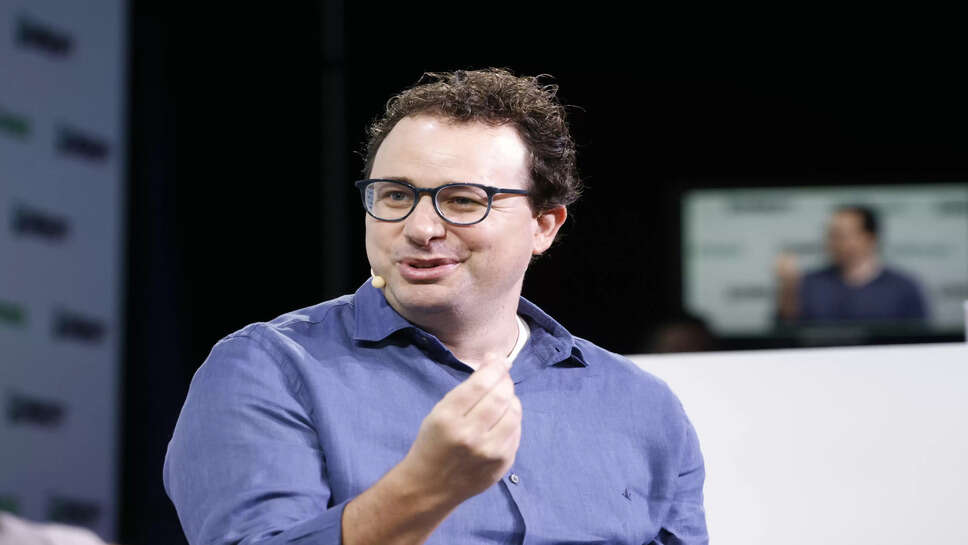Sam Altman, Jensen Huang on AI’s Job Impact: Threat or Opportunity?

As artificial intelligence (AI) continues its rapid evolution, a growing chorus of thought leaders—among them Sam Altman, CEO of OpenAI, and Jensen Huang, co-founder and CEO of NVIDIA—are offering pointed perspectives on how AI will reshape work, employment, and society. Drawing from their recent interviews, speeches, and discussions, here’s a comprehensive 1,000‑word analysis of their vision for the future of jobs in the age of AI.
Sam Altman: Balancing Innovation & Responsibility
1. AI as Job Multiplier — Not Just a Disruptor
Altman frequently underscores AI’s potential as a job creator rather than solely a job eliminator. Though certain roles—especially those involving repetitive tasks—may face obsolescence, he highlights how AI will spur demand for:
-
AI trainers, supervisors, and ethicists
-
Industry‑specific specialists—legal experts fluent in AI policy, educators crafting AI curricula, and healthcare professionals using AI diagnostics
-
New creative roles—artists, writers, and filmmakers leveraging AI as co‑creators
Altman emphasises that many jobs will shift but remain essential; the machine-human partnership becomes a force multiplier.
2. Productivity Boom and Economic Opportunity
According to Altman, AI’s true transformative power lies in boosting productivity across industries—from manufacturing to medicine. He points out that increased output can generate broader prosperity, but warns equilibrium is needed: productivity gains must be channeled to fundamentally better wages, services, and living standards.
3. Re-Skilling is a Societal Imperative
Altman urges a massive reskilling effort. He recommends:
-
Government-sponsored training platforms
-
Public–private partnerships—including technology firms and universities
-
Apprenticeships and micro‑credentialing initiatives
He stresses that reskilling must begin preemptively, not in response to mass layoffs—so that workers can transition smoothly into new roles supported by AI.
4. AI Safety & Regulation as Prerequisites
Altman is vocal about the need for proactive AI safety measures and clear regulatory guardrails. His proposals include:
-
Independent oversight bodies to assess high-impact AI systems
-
Formal risk assessments akin to those in aerospace and pharmaceuticals
-
International cooperation to avoid global “AI races” that compromise safety standards
By establishing norms, Altman believes uncertainty around AI can be minimized—bolstering public trust and job stability.
Jensen Huang: Hardware, Innovation, and Human Ingenuity
1. Enabling New Frontiers Through Compute Power
Huang’s Nobel lies in his belief that AI hardware innovation—especially in GPUs and custom silicon—is the bedrock of the AI revolution. He argues that:
-
More advanced chips unlock previously impossible applications, from real-time language translation to protein-folding drug design
-
This will create demand not just for chip makers, but for specialists in cloud engineering, hardware design, and data infrastructure
As AI becomes embedded in society, new technical roles will emerge from advanced hardware ecosystems.
2. AI as a Creative Catalyst
Huang portrays AI as an amplifier of human creativity. He highlights cases like:
-
Studio effects artists using AI to render complex visuals faster
-
Automotive designers using simulation engines powered by AI
-
Bioinformatics teams accelerating research with AI-powered analysis pipelines
He believes that creativity won’t be replaced—but time-consuming creative tasks will be faster and richer, enabling humans to focus on higher-order innovation.
3. Democratizing Access to AI Tools
Through his company’s initiatives—like open-source toolkits and community GPUs—Huang aims to empower individual developers, researchers, and small businesses. He suggests that barriers to entry in AI are lowering, and that anyone with skill and vision can launch AI-driven ventures.
This ecosystem-level vision emphasizes how computing democratization fosters grassroots job growth in tech and adjacent industries.
4. Workforce Transformation & Education
Huang is also vocal about shifting education paradigms. He proposes:
-
STEM and AI curriculums from early education levels
-
Multi-disciplinary blending—melding coding with creativity, ethics, and domain-specific expertise
-
Lifelong learning infrastructure—so professionals across industries can adapt fast
This approach reshapes job readiness while nurturing human adaptability in an AI world.
Converging Themes: Altman & Huang on AI’s Jobs Impact
Though their domain differences—Altman from a policy-technology standpoint, Huang from hardware-innovation—color their perspectives, both leaders agree on key points:
🔸 AI as a Complement, Not an Enemy
Altman and Huang envision AI as a collaborative accelerator, not a replacement. The message is consistent: humans will be essential partners in systems governing and leveraging AI intelligence.
🔸 Empowerment Through Education & Reskilling
Both stress proactive education systems. Altman focuses on societal reskilling, Huang on evolving STEM curricula. They envision citizens equipped with tools to thrive in AI-rich careers—far from passive automation casualties.
🔸 Fair Economic Models & Safety First
Productivity gains must be coupled with equity and safety. Altman champions regulation and economic scaling; Huang envisions widespread access to computing, democratizing opportunity.
🔸 Infrastructure as a Catalyst for Job Creation
Their shared emphasis on compute infrastructure echoes a core truth: innovation begets employment. Where breakthroughs happen, jobs follow—across startups, research labs, and large enterprises.
Policy Implications and Societal Responsibilities
Altman and Huang’s insights suggest urgent policy and institutional responses:
A) Global Skills Strategy
Developers, educators, and policymakers must collaborate on lifelong learning platforms, credentialing services, and affordable bootcamps. Public funding will be key for equitable access.
B) AI Governance Structures
To prevent job-market disruption and ethical missteps, governments and tech entities must shape risk assessment frameworks, usage standards, accountability boards, etc.
C) R&D Investment in Infrastructure
Public investment in research computing centers, accessible high-performance clusters, and edge-compute deployment is necessary to widen entry to AI-led innovation.
D) Social Safety Nets & Economic Rebalancing
Job transitions, even with reskilling, can displace sectors. To mediate, proposed mechanisms include earned benefits, wage insurance, income support—complemented by policies that ensure fair distribution of AI’s economic bounty.
What Workers Should Know
-
🎓 Stay curious: Embrace AI tools relevant to your field— from automation to analytics
-
🚀 Adapt quickly: Use free/low-cost AI curriculum like online courses, certs, bootcamps
-
💡 Highlight uniquely human skills: Soft skills—creativity, empathy, strategic thinking—will complement AI
-
🤝 Advocate for workplace reskilling: Encourage employers to fund internal training and AI adoption
-
🌐 Engage in policy discourse: Workers’ voices matter in shaping AI-related laws and social programs
Final Take
Both Sam Altman and Jensen Huang deliver a cohesive and forward-looking vision: AI will undoubtedly transform jobs—but not eliminate the need for human agency. They foresee a future where humans are up-skilled collaborators, holding roles as architects, trainers, and ethical overseers of AI systems.
However, that future hinges on proactive strategies:
-
Widespread, affordable reskilling
-
Research and regulatory frameworks
-
Infrastructure that fosters democratized innovation
-
Economic models that ensure shared prosperity
The AI revolution carries immense promise—but its promise will only be realized if society chooses to guide it intentionally. As Altman and Huang remind us, machines are powerful—but it is our human intent that will shape whether this era becomes one of empowerment or exclusion.
